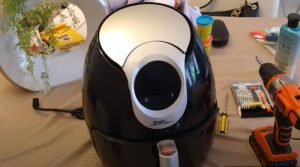Blender Not Blending: 10 Troubleshooting Issues
Dealing with a ‘blender not blending’ situation can be a frustrating experience, especially when you’re preparing your favorite smoothie. Many of us encounter this common kitchen appliance issue, but don’t worry – it’s often easily fixable. Whether it’s due to a mechanical problem, an obstruction, or simply a lack of power, understanding why your Blender has stopped blending and how to troubleshoot it can save you time, money, and unnecessary stress.
For home cooks and smoothie enthusiasts, a blender not blending can be a significant source of frustration. From a motor that’s lost its whir to blades stuck in place, this comprehensive guide takes you through a step-by-step process to troubleshoot and fix common blender issues. Let’s explore some potential causes and solutions for this all-too-common blender predicament.
The Top Reason For Blender Not Blending
Before you can fix the problem, you need to identify what’s causing it. Here are some common issues that could be plaguing your blending experience.
Blending Motor Not Working: A non-functional blending motor is critical, as it stands at the heart of a blender’s operation. If the engine fails to work, the appliance will not blend regardless of whether other conditions are optimal. This could stem from various causes, such as overheating, which may trigger an automatic shutdown to prevent damage or a burnt-out motor due to excessive use or age.
It’s also possible that a manufacturing defect or wear and tear over time has led to a mechanical failure within the motor itself. The first sign that something might be amiss is when you press the ‘on’ button, and there’s no sound from your Blender. The problem could stem from electrical issues, a faulty power supply, or a motor that has simply run its course.
Blades Not Spinning: When a blender’s blades stop spinning, it could signal a disconnect between the motor and blade assembly. Often, this is due to a worn-out coupler or a misalignment of the drive stud that fits into the blade assembly, which can happen with regular wear and tear or if the Blender has been used to process heavy loads frequently. If the motor is operational but the blades remain stationary, holding the motor shaft with pliers and inspecting the drive stud for movement may reveal whether the issue lies within the mechanical coupling of these parts.
Insufficient Power Supply: An inadequate power supply is one of the foremost issues when a blender fails to operate correctly. Blenders require an adequate and consistent voltage to function, and any deviation from the necessary power can result in the appliance not turning on or blending improperly. This can happen if the Blender is connected to an outlet that cannot provide enough electricity due to other high-power devices sharing the same circuit or if there are voltage fluctuations within the electrical system.
Users should ensure their Blender is plugged into a suitable outlet, preferably without other appliances drawing power simultaneously. If the Blender continues to exhibit issues and the power source has been ruled out, it could indicate internal wiring problems or a fault with the motor, which would require professional inspection or repairs.
Food Getting Stuck: Food getting stuck is a common obstacle in the blending process, causing the blades to jam and preventing the Blender from functioning smoothly. This usually occurs when large chunks of ingredients aren’t sufficiently broken down before blending or when the Blender is overfilled, impeding the circulation needed for an even blend. Additionally, thick or sticky substances can accumulate under the blades, creating resistance that halts their movement.
Improper Assembly: Sometimes, the Blender might appear to spin but not blend if it’s not assembled correctly. Verify that the jar is locked and the blades are secured tightly. Improper assembly of a blender can lead to issues with blending efficiency and performance. This usually happens when the Blender’s components are not fitted together correctly, causing a misalignment that prevents the blades from spinning correctly.
For instance, if the pitcher isn’t locked into the base as designed or if the blade assembly isn’t tightly screwed onto the pitcher, the safety mechanisms might prevent the motor from operating to avoid potential hazards.
Blocked Blades: Ingredients around the blades can impede the blending process, rendering it ineffective. This blockage often occurs when dense ingredients or foreign objects obstruct the blade’s path, preventing it from rotating. Food particles may sometimes compact under the blades after previous uses and solidify, especially if not cleaned properly.
Additionally, fibrous materials like celery or leafy greens can wrap around the blade assembly, causing a halt in movement.
Air Pockets: Air pockets can disrupt the blending process by creating spaces where the blades spin without contacting the ingredients. This phenomenon often occurs when the Blender is loaded with too many solid items or insufficient liquid to generate the necessary vortex that pulls ingredients toward the blades.
Heavier items may also sink to the bottom, trapping air beneath them and causing the blades to whip up air rather than blend the contents.
Overfilling: The Blender is a common mistake Overfilling that can hinder its blending capabilities. When the pitcher is filled beyond its capacity, it leaves little room for the contents to move around, making it difficult for the blades to create an effective circulation pattern. This can result in an uneven blend where some ingredients remain chunky while others are over-processed. Moreover, overfilling can cause leakage and damage to the motor due to the strain of trying to process too large a volume or too dense a mixture.
Dull Blades: a blender is a common issue in Dull Blades that impedes the appliance’s ability to blend efficiently. Over time, with regular use, blender blades can lose their sharpness, resulting in a less effective cutting action, leaving behind unblended chunks or creating an uneven texture in your blends. This can be especially problematic when trying to achieve a smooth consistency in purées, soups, or smoothies. The dullness of the blades increases the stress on the Blender’s motor as it works harder to process the ingredients, potentially shortening the appliance’s lifespan.
Power Setting: Incorrect power settings can affect blending efficiency. Adjusting the power setting appropriately is crucial for a blender to perform at its best. Many blenders come with multiple speed options, and using the correct setting is critical to avoiding blending issues. Starting at a lower speed allows the blades to pull the ingredients toward them and begin the blending process without causing air pockets or overloading the motor.
Gradually increasing the speed can create a powerful vortex, ensuring all ingredients are thoroughly blended to a smooth consistency.
Conversely, setting the power too high from the start can cause splattering and potentially push ingredients away from the blades, especially if there are lighter components, such as leafy greens or powders. It’s also essential to use a higher power setting for more complex ingredients like ice or nuts to ensure they are broken down effectively. Understanding and utilizing the correct power settings for different ingredients can significantly affect the quality of your blend and the longevity of your Blender’s motor.
Too Many Frozen Ingredients: Frozen ingredients can halt the blade’s movement. Incorporating too many frozen ingredients in a blender can lead to difficulties with blending, resulting in the machine stalling or failing to produce a smooth texture. The cold temperature and hardness of frozen fruits or ice require more power to break down, and an excess can strain the Blender’s motor and potentially damage the blades.
 Looking for ninja blender base cleaning instructions?
Looking for ninja blender base cleaning instructions? Cleanliness is essential to maintaining the performance and lifespan of your ninja blender
Always consult your Blender’s user manual for specific troubleshooting, as it will provide detailed instructions tailored to your model. Suppose these solutions do not resolve the issue. In that case, your Blender might have a mechanical problem, and you may need to contact the manufacturer for repairs or consider purchasing a new one.
Troubleshooting tips for Blender not blending
When your Blender starts acting up, don’t panic. Follow these steps to diagnose the issue and get back to blending quickly.
If your Blender is not blending properly, follow these troubleshooting steps to identify and solve common issues:
1. Check Power Supply
- Ensure the Blender is plugged into a working outlet.
- Verify that the electrical circuit is functioning by checking the circuit breaker or testing another appliance in the same outlet.
2. Inspect Blades for Obstructions
- Unplug the Blender.
- Remove the pitcher from the base and inspect the blades for any obstructions, such as food debris.
- Clean the blades thoroughly; a buildup can hinder their motion and blending capability.
3. Examine Blade Assembly
- Check if the blade assembly is correctly attached to the pitcher with the Blender unplugged.
- If it’s loose, refer to the Blender’s manual for instructions on tightening it properly.
4. Check for Air Pockets
- Air pockets can form around the blades and prevent proper blending.
- To eliminate air pockets, gently shake the Blender or use a spatula (with the Blender turned off and unplugged) to redistribute the ingredients.
5. Cycle the Power Switch
- Sometimes, grime or buildup can affect the power switch.
- With the Blender unplugged, toggle the power switch on and off several times to dislodge any potential debris.
6. Confirm Blade Spin Functionality
- After ensuring the Blender is unplugged, manually spin the blades (using a tool if necessary for safety) to check for smooth rotation.
- An underlying mechanical issue may require further investigation or professional repair if the blades do not turn freely.
7. Tighten Loose Components
- Inspect for a loose drive stud, which connects the motor to the blade assembly.
- If it’s loose, follow the manufacturer’s guidelines to tighten it. You may need to access the bottom of the blender base for this adjustment.
8. Vary Ingredient Consistency
- Reassess the types of ingredients you’re blending. Too many frozen items or excessively thick mixtures can tax the motor.
- Add enough liquid to facilitate blending and start on a low speed, gradually increasing as needed.
9. Disassemble and Test Drive
- If none of the above solutions work, carefully disassemble the drive according to your Blender’s manual instructions.
- Check the blade shaft to see if it turns smoothly. If it doesn’t, the bearings might be worn out, and you may need a replacement part or professional assistance.
10. Seek Professional Help
- If your Blender still isn’t working correctly after completing all the steps, it might be time to consult the manufacturer for further guidance or inquire about a warranty service.
Improving Better Blending: Additional Tips
Sometimes, the issue isn’t with the Blender but with user error. Here are some additional tips to maximize your blending experience.
Using the Right Blending Techniques: Different ingredients blend best with different techniques. For example, pulsing might work better for ice, while a continuous blend is best for smooth liquids. Learn the proper method for your recipe to avoid unnecessary strain on your Blender.
Adjusting Speed and Settings: For a reason, most blenders come with various speeds and settings. Playing around with these settings can lead to better consistency and less stress on the motor. Start slow and ramp up high speed for harsh ingredients to avoid overloading the motor.
Using Liquid and Solid Ingredients in the Right Proportions: Blenders must balance liquid and solid ingredients to function correctly. Too little liquid can cause food to stick, while too much can lead to a watery result. Follow your recipe’s guidance to achieve the correct ratio for your blend.
Choosing the Right Blender for Your Needs: Not all blenders are equal. Think about what you’ll use your Blender for most, and invest in a model that can handle those tasks. A high-powered blender might be worth the cost if you’re a daily smoothie drinker or love to make nut butter, while a simple, less powerful Blender could be sufficient for occasional use.
Final Verdict
Dealing with a blender not blending can be daunting, but it’s not an insurmountable problem. You can often return your appliance to optimal performance with the proper knowledge and patience. Whether it was a simple obstruction or a more complex mechanical issue, understanding the potential causes and solutions can prevent future disruptions. Remember these tips, and you’ll return to making your favorite smoothies, soups, and purees in no time. Regular maintenance and timely troubleshooting are the keys to a well-functioning blender. Happy blending!
FAQs of Blender Not Blending
Why is my Blender not blending?
Your Blender might not be blending for several reasons, such as a blockage in the blade assembly, a worn-out or damaged blade, a motor issue, or even a power supply problem.
How can I fix a blender that’s not blending?
First, unplug the Blender and check for any obstruction in the blade assembly. If the blades are clear and still not spinning, they may be worn out or damaged and need replacing. If the blades are fine, the problem could lie with the motor or power supply, which may require professional repair.
Can I replace the blades on my Blender?
Yes, most blender blades can be replaced. You’ll need to purchase a replacement part that matches your specific model. Ensure that you unplug the Blender before attempting to replace the blades.
What should I do if my Blender’s motor is not working?
If your Blender’s motor isn’t working, it’s best to consult a professional appliance repair service. Attempting to fix a motor issue yourself can be dangerous if you’re unfamiliar with the process.
How often should I clean my Blender?
To avoid issues like obstruction or damage to the blades, cleaning your Blender after each use is recommended. This includes cleaning the jug, lid, and base where the blades are located.
How do I maintain my Blender to prevent it from not blending?
Regular cleaning and maintenance are crucial to preventing blending issues. This includes cleaning after each use, checking the blades for damage regularly, and ensuring the motor isn’t overworked by blending hard ingredients for extended periods.
can you blend frozen fruit without liquid?
Blending frozen fruit without liquid is not recommended as it can strain the motor excessively and may cause damage. Adding some liquid, such as water or juice, will help facilitate blending and prevent potential issues. However, it may be safe if your Blender has a “frozen dessert” setting or is specifically designed for blending frozen items without liquid.






